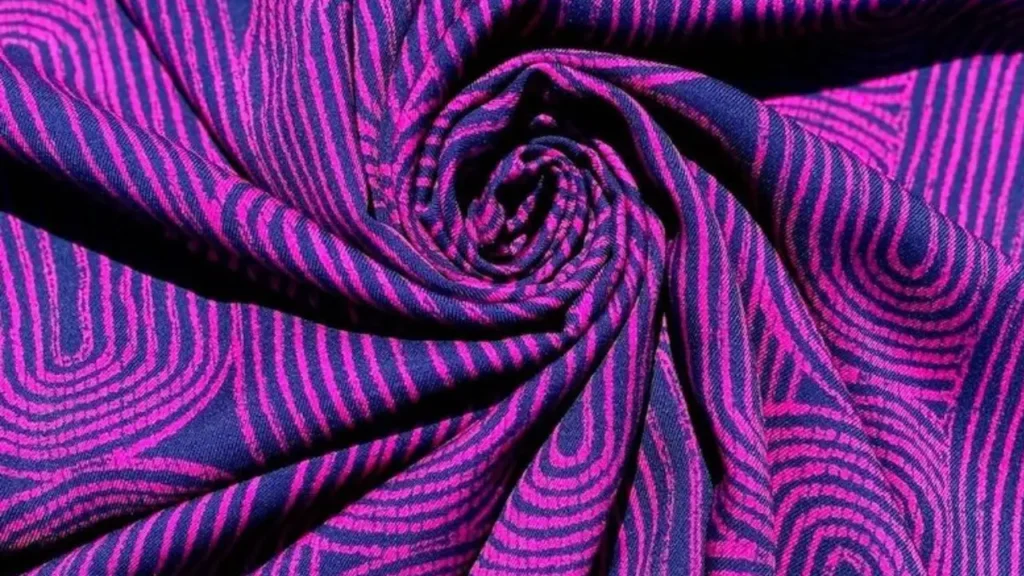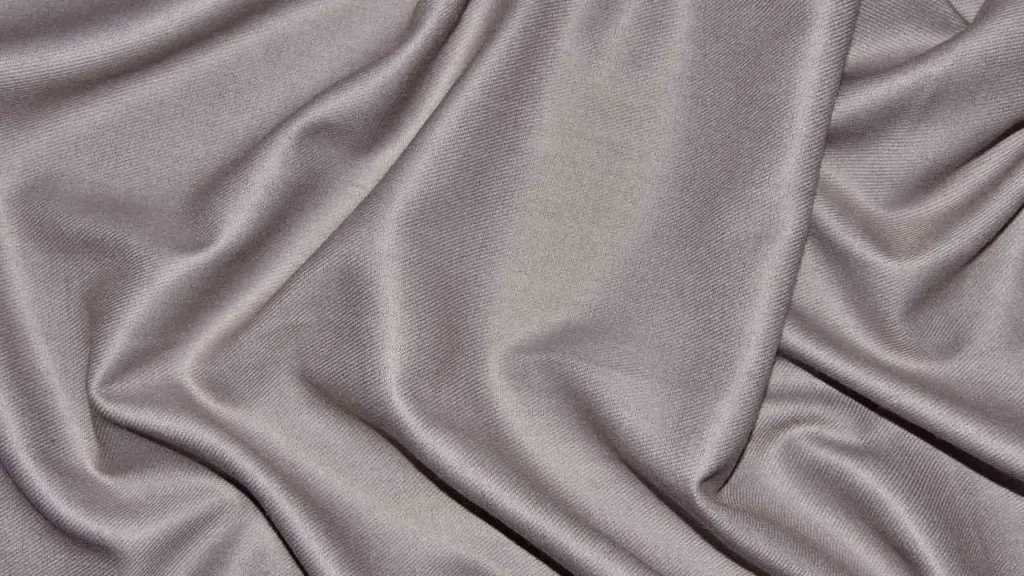Twill viscose fabric is a combination of two essentials: the soft, breathable fibers of viscose and the durable, diagonal weave of twill. This mix creates a fabric that’s not just comfortable to wear but also has a distinct sheen and texture that catches the eye. Whether you’re picking fabric for clothing or a DIY project, understanding twill viscose can help you choose the perfect option for your needs.
Lately, twill viscose has grown in popularity within both fashion and home décor, thanks to its versatility and classic look.
Whether you’re designing your own wardrobe, adding a touch of elegance to your home, or just looking for a fabric that’s both practical and stylish, its durability and wrinkle resistance make it a great choice. The more you know about twill viscose, the better equipped you’ll be to make informed choices while shopping or creating.
What is Twill Viscose Fabric?

Twill viscose fabric is a fantastic blend of two key elements—twill weave and viscose fiber—each bringing its own unique qualities. ‘Twill’ is a weaving technique that creates diagonal lines on the fabric’s surface, setting it apart from weaves like the flat plain weave or the glossy satin weave. This diagonal pattern gives twill fabrics, like denim, their durability and texture.
Viscose, on the other hand, is a semi-synthetic fiber made from natural materials like wood pulp or bamboo. It’s soft, breathable, and has a bit more sheen than cotton. When combined, these elements result in a fabric that’s smooth, comfortable, and durable, with a subtle texture and a slight shine—perfect for stylish clothing and home décor projects.
Characteristics of Twill Viscose Fabric
Twill viscose fabric offers a unique blend of comfort, durability, and style. Here’s why it’s becoming a favorite for those crafting comfortable, long-lasting pieces:
Fabric Texture and Feel:
Twill viscose stands out for its smooth texture and subtle sheen, which gives it a luxurious feel against the skin. Compared to cotton or polyester twill, it’s a bit silkier and softer, offering a gentler touch that enhances both comfort and style. While cotton twill may be heavier with more texture, viscose twill provides a more fluid, draping feel.
Strength and Durability:
Don’t let its soft surface fool you—twill viscose is built to last. The twill weave, with its signature diagonal lines, boosts the fabric’s strength, making it much more resilient than regular viscose. So, whether you’re wearing it for daily activities or special occasions, you can rely on it to maintain its quality.
Breathability and Comfort:
Thanks to its natural cellulose fibers, twill viscose is highly breathable, making it perfect for warmer weather. It lets air circulate freely and absorbs moisture, which helps you stay comfortable throughout the day, whether you’re busy at work or enjoying a sunny afternoon.
Drape and Fit:
The fabric’s lovely drape gives garments a natural flow and movement. This makes it ideal for dresses, skirts, and blouses that require flexibility and a flattering fit. Twill viscose hugs the body gently, ensuring comfort without being restrictive, making it a perfect choice for both casual and dressy occasions.
Advantages of Twill Viscose Fabric

Wrinkle-Resistance and Easy Maintenance
Thanks to its twill weave, this fabric resists wrinkles naturally, meaning your clothes and home textiles stay fresh and neat for longer. It’s a real time-saver for those who don’t want to spend too much time ironing. With just a little care, you can keep your pieces looking crisp without any hassle.
Skin-Safe and Non-Irritating
If you have sensitive skin, twill viscose is a fantastic option. Made from hypoallergenic viscose fibers, it’s gentle and soft to the touch, making it ideal for kids’ clothing, activewear, or anyone prone to skin irritations. Its comfort factor is off the charts, making it a perfect fabric for daily wear.
Versatility Across Different Applications
From fashion to home décor, twill viscose is incredibly versatile. You can find it in everything from elegant shirts, dresses, and trousers to stylish outerwear. When it comes to home textiles, think beautiful curtains, sturdy upholstery, and cozy bedding—this fabric checks all the boxes. Whether you’re outfitting your wardrobe or enhancing your living space, twill viscose has you covered.
Cons of Twill Viscose Fabric
Prone to Damage from Excessive Moisture:
Twill viscose can suffer from water marks and fading if exposed to too much moisture. While it’s breathable, you’ll want to be cautious around spills or wet environments. Protect it from getting soaked to keep it looking fresh.
Less Durable Than Natural Fibers:
Though twill viscose is strong, it’s not as tough as natural fibers like cotton or linen, especially in heavy-use situations. If you’re making something that will see a lot of wear, like workwear or heavy-duty upholstery, this might not be the best option.
Requires Careful Washing and Drying:
Twill viscose needs some extra care when washing and drying. To maintain its smooth texture and sheen, avoid high temperatures in the wash and dryer. Stick to gentle cycles and air drying to prevent shrinkage or loss of its luxurious feel.
Common Uses of Twill Viscose Fabric

Twill viscose fabric is incredibly versatile, and you’ll find it’s perfect for a range of uses—from fashion to home décor. Let’s dive into the most common ways you’ll see twill viscose used:
Fashion Applications
- Ideal Garments: Twill viscose is fantastic for creating stylish shirts, skirts, dresses, trousers, blouses, and jackets. The fabric’s smooth texture and natural drape give it a luxe feel, making it perfect for flowy, elegant pieces.
- Why It’s a Go-To: Thanks to its breathability, softness, and subtle sheen, twill viscose is a great choice for versatile garments that move seamlessly from casual to formal. It hugs your body beautifully and is comfortable to wear throughout the day.
- Benefits for Fashion: Whether you’re sewing a formal dress or a relaxed blouse, twill viscose offers the ideal mix of structure and flow. It’s particularly great for garments that need flexibility and natural movement, like dresses or skirts.
Home Décor Applications
- Upholstery: Twill viscose works wonders in upholstery, adding texture and durability to your furniture. Whether you’re covering a sofa or reupholstering a chair, the fabric’s strength makes your pieces last longer, all while giving them a soft, luxurious feel.
- Soft Furnishings: This fabric is also perfect for home textiles like curtains, bed linens, and cushions. Its smooth finish gives any room a polished look, while the breathability keeps your space comfortable and inviting.
Industrial and Workwear
- Comfort for Heavy-Duty Use: With its breathable, moisture-wicking properties, twill viscose helps you stay comfortable in demanding work environments. The natural stretch and ease of movement make it perfect for long hours on the job.
- Uniforms and Workwear: Twill viscose is a smart choice for uniforms and workwear because it combines durability with comfort. The fabric’s twill weave provides added strength, making it resilient to wear and tear without sacrificing softness.
Twill Viscose vs Other Fabrics
Twill Viscose vs Regular Viscose
- Durability: Regular viscose is soft and breathable but less durable. Twill viscose, with its signature twill weave, is more resilient, making it better at resisting wear and tear.
- Comfort: Both fabrics are comfortable, but twill viscose offers added texture and a luxurious feel, while regular viscose tends to be lighter and more fluid.
Twill Viscose vs Cotton Twill
- Breathability: Both fabrics are breathable, but twill viscose is lighter and slightly more breathable than cotton twill, making it perfect for warmer climates or active wear.
- Durability and Maintenance: Cotton twill is durable and easy to care for but can wrinkle easily. Twill viscose, while a little more delicate, resists wrinkles and requires gentler care, making it durable for daily use with a more polished look.
Twill Viscose vs Polyester Twill
- Eco-Friendliness: Made from natural fibers like bamboo or wood pulp, twill viscose is more sustainable compared to polyester, which is synthetic and derived from petroleum.
- Softness and Sheen: Twill viscose has a soft, silky finish and natural sheen, unlike polyester twill, which tends to feel more rigid and less luxurious.
Care and Maintenance of Twill Viscose Fabric
Washing Twill Viscose
- Machine vs. Handwashing: Twill viscose is happy with a gentle machine wash, but if you’re in the mood for a little extra TLC, handwashing is a safe bet. And remember to flip it inside out to protect the surface and keep it looking fresh!
- Temperature Tips: Stick to cold or lukewarm water (around 30°C/85°F) to avoid shrinking or color fading. Hot water? No, thanks—it can damage the fibers and affect that smooth feel you love.
Drying and Ironing
- Drying Tips: Air drying is the best for twill viscose—just lay it flat or hang it up to dry naturally. If you’re in a rush, you can machine dry on low heat, but keep an eye on it to avoid over-drying (which can cause some damage).
- Ironing: Set your iron to low or medium heat for the best results. If you’re worried about that lovely sheen, place a cloth between the iron and fabric to keep it safe from direct heat.
Storing Twill Viscose
- Long-Term Storage: If you’re storing fabric for a while, use breathable storage bags and keep it away from direct sunlight to prevent fading. A dry, cool space is perfect to maintain its quality.
- Storage Tips: Hang your garments in a cool, dry spot to avoid stretching or wrinkling. Don’t overcrowd your closet—let the fabric breathe! For fabric storage, roll it up or fold gently to keep it crease-free.
Conclusion
Twill viscose fabric blends durability, comfort, and versatility perfectly. It’s soft, breathable, and gentle on the skin, making it an excellent choice for daily wear and creative projects. Whether you’re sewing clothes, decorating your home, or anything else, this fabric keeps you comfy while looking polished. Plus, it’s easy to care for and lasts with the right maintenance.
Haven’t tried twill viscose yet? Now’s your chance! From dresses to cushions, its flexibility makes it a great fit for all kinds of projects. So, go ahead and explore how this fabric can bring beauty and function to whatever you’re working on.
